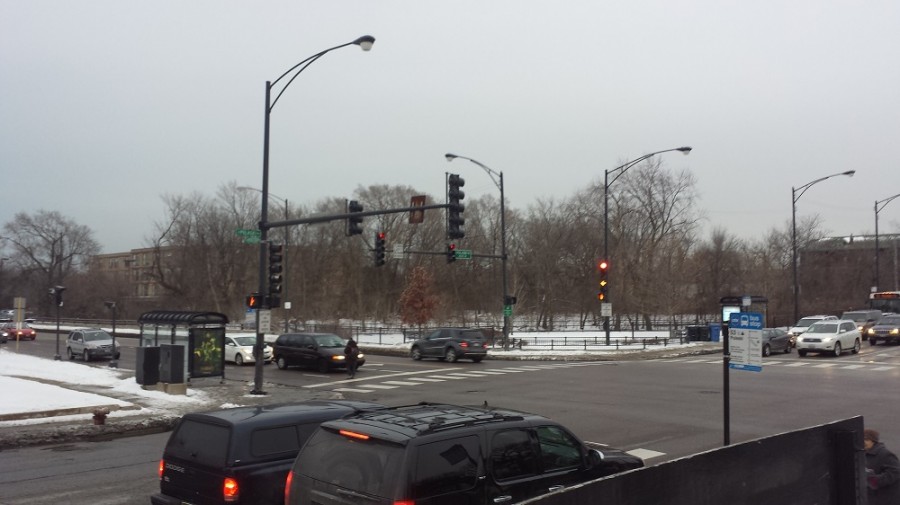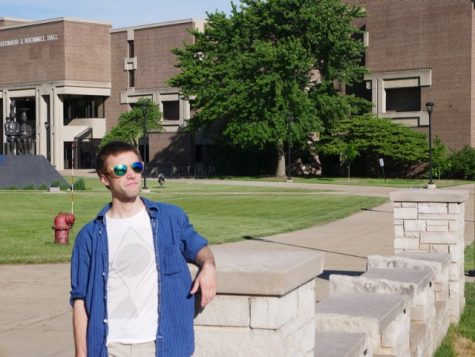Unplowed Streets Cause Pain & Suffering Amongst Chicago Citizenry
Pulaski and Foster Avenue after it has been plowed
January 13, 2015
January in Chicago is always humorless and depressing.
The winter takes its nose-dive into unlivable, borderline Yukon temperatures; the skies, for weeks at a time, remain the same dull and impassive shade of gray native to cinderblocks or bulk grain silos; the temperature can go back up to 40 or 80 degree and just as you begin to acclimate, and then it rains in a torrential downpour—leaving vast lagoons that turn to ice when temperatures plunge back to zero on the next day; the sidewalks, bus stops and train stations are polluted with the frozen remnants of pigeons, squirrels and vagrants that didn’t quite make it to the heat-lamp—soon they will be collected in dark bags, discarded into the wrong bin, and recycled for commercial use.
All of this comes with living in or near Chicago. We are used to it, for good or ill. But these issues become minuscule when the streets, many hours after the commencement of snowfall, remain unplowed.
And unplowed they were, that fateful Monday of last week. It seemed there wasn’t a single road—highways included—between Lake Michigan and the sleepy suburb of Oak Park that had received attention from more than a single forlorn snow plow before one o’clock in the morning. Travelling from the Loop in those early hours, only the far left lane of the Eisenhower expressway had been even marginally attended to—and it was only partially cleared with a long and inconsistent strip that erred constantly from left to right.
The snow, as promised by the city of Chicago, was cleared in the morning. Traffic flowed well. It was like stepping out from some weird kind of dream. The snow plows had indeed done their job, they had done it in the very early morning hours—it appeared that what I saw had only been the vanguard of the fleet. The rest were to be deployed later, in the wee hours.
The snowfall was not unexpected. It came in a major winter storm that, according to Alex Sosnowski of Accuweather.com on Jan. 4, “brought rare snow to Southern California and the Southwest at midweek and [continued] to spread a swath of snow, ice, rain and travel problems from Chicago to Boston…”
On Thursday, Jan. 8, the snowfall was powerful enough to stop a bus—my bus—dead in its tracks—one of its wheels stuck deep in a snow bank— in the middle of rush-hour traffic. Admittedly, a snow plow would have been useless in that situation, but there must be some way to ensure the well-being of the roads throughout the day, as well as in the night.
Well, the winter is here now. It is here in full force, and I suppose we’ll all just have to deal with that, as we usually do, until Chicago decides it’s high time to skip spring and hurry along to summer.









